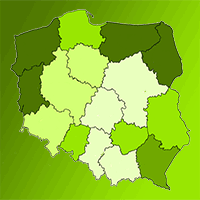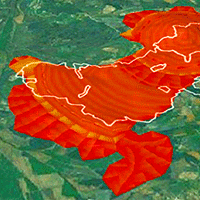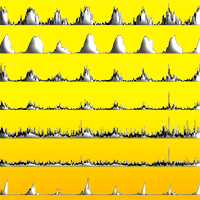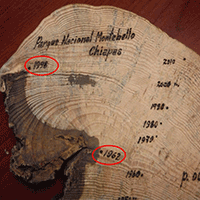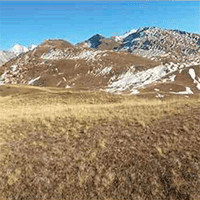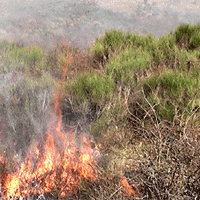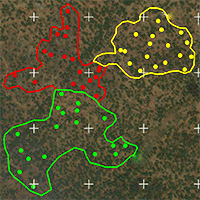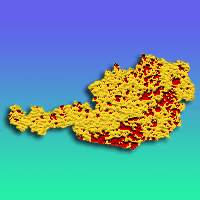
Modeling human-caused forest fire ignition for assessing forest fire danger in Austria
N Arndt (1) , H Vacik (1), V Koch (2), A Arpaci (1), H Gossow (3)
iForest - Biogeosciences and Forestry, Volume 6, Issue 6, Pages 315-325 (2013)
doi: https://doi.org/10.3832/ifor0936-006
Published: Jul 16, 2013 - Copyright © 2013 SISEF
Research Articles
Abstract
Forest fires have not been considered as a significant threat for mountain forests of the European Alpine Space so far. Climate change and its effects on nature, ecology, forest stand structure and composition, global changes according to demands of society and general trends in the provision of ecosystem services are potentially going to have a significant effect on fire ignition in the future. This makes the prediction of forest fire ignition essential for forest managers in order to establish an effective fire prevention system and to allocate fire fighting resources effectively, especially in alpine landscapes. This paper presents a modelling approach for predicting human-caused forest fire ignition by a range of socio-economic factors associated with an increasing forest fire danger in Austria. The relationship between touristic activities, infrastructure, agriculture and forestry and the spatial occurrence of forest fires have been studied over a 17-year period between 1993 and 2009 by means of logistic regression. 59 independent socio-economic variables have been analysed with different models and validated with heterogeneous subsets of forest fire records. The variables included in the final model indicate that railroad, forest road and hiking trail density together with agricultural and forestry developments may contribute significantly to fire danger. The final model explains 60.5% of the causes of the fire events in the validation set and allows a solid prediction. Maps showing the fire danger classification allow identifying the most vulnerable forest areas in Austria and are used to predict the fire danger classes on municipality level.
Keywords
Forest Fire, European Alpine Space, Austria, Infrastructure, Socio-economic Factors, Geographic Information System, Logistic Regression
Authors’ Info
Authors’ address
Department of Landscape, Spatial and Infrastructure Sciences, Institute of Surveying, Remote Sensing and Land Information, University of Natural Resources and Life Sciences, Peter Jordan Str. 82, A-1190 Vienna (Austria)
Department of Integrative Biology and Biodiversity Research, Institute of Wildlife Biology and Game Management, University of Natural Resources and Life Sciences, Peter Jordan Str. 82, A-1190 Vienna (Austria)
Corresponding author
Paper Info
Citation
Arndt N, Vacik H, Koch V, Arpaci A, Gossow H (2013). Modeling human-caused forest fire ignition for assessing forest fire danger in Austria. iForest 6: 315-325. - doi: 10.3832/ifor0936-006
Academic Editor
Marco Borghetti
Paper history
Received: Dec 18, 2012
Accepted: Apr 14, 2013
First online: Jul 16, 2013
Publication Date: Dec 02, 2013
Publication Time: 3.10 months
Copyright Information
© SISEF - The Italian Society of Silviculture and Forest Ecology 2013
Open Access
This article is distributed under the terms of the Creative Commons Attribution-Non Commercial 4.0 International (https://creativecommons.org/licenses/by-nc/4.0/), which permits unrestricted use, distribution, and reproduction in any medium, provided you give appropriate credit to the original author(s) and the source, provide a link to the Creative Commons license, and indicate if changes were made.
Web Metrics
Breakdown by View Type
Article Usage
Total Article Views: 66662
(from publication date up to now)
Breakdown by View Type
HTML Page Views: 52644
Abstract Page Views: 6022
PDF Downloads: 5887
Citation/Reference Downloads: 97
XML Downloads: 2012
Web Metrics
Days since publication: 4532
Overall contacts: 66662
Avg. contacts per week: 102.96
Citation Metrics
Article Citations
Article citations are based on data periodically collected from the Clarivate Web of Science web site
(last update: Mar 2025)
Total number of cites (since 2013): 56
Average cites per year: 4.31
Publication Metrics
by Dimensions ©
Articles citing this article
List of the papers citing this article based on CrossRef Cited-by.
References
Austrian Forest Inventory. Österreichische Waldinventur 2007/2009, BFW-Praxisinformation Nr. 24. Bundesforschungsanstalt und Ausbildungszentrum für Wald, Naturgefahren und Landschaft.
Gscholar
Statistik mit SPSS: ausgewählte Verfahren für Wirtschaftswissenschaftler. München, Vahlen X, pp. 277. ISBN 3-8006-2197-5 [in German]
Gscholar
Tourismus im Alpenraum, Chancen und Risiken eines bedeutenden Schweizer Wirtschaftssektors im Umbruch. Informationsheft Forum Raumentwicklung no. 34, Schweizerische Eidgenossenschaft, Bundesamt für Raumentwicklung, Bern, Swiss. Abdruck erwünscht mit Quellenangabe, Belegexemplar an ARE. ISSN 1660-624 8. [in German]
Gscholar
Factors influencing modern wildfire occurrence in the Mark Twain National Forest, Missouri. Southern Journal of Applied Forestry 31 (2): 73-84.
Gscholar
Integration of physical and human factors in fire danger assessment. In: “Wildland Fire Danger Estimation and Mapping - the Role of Remote Sensing Data” (Chuvieco E ed). World Scientific Publishing, Singapore, pp. 197-218.
Gscholar
Development of a framework for fire risk assessment using remote sensing and geographic information system technologies. Ecological Modelling 221: 46-58.
CrossRef | Gscholar
Some factors influencing wildfire occurrence and measurement of fire-prevention effectiveness. Journal of Environmental Management 20: 87-96.
Gscholar
Geographically weighted regression. The analysis of spatially varying relationships. John Wiley and Sons, West Sussex, UK, pp. 269.
Gscholar
Territorial strategies and environmental continuity in mountain regions: the case of the Apennines. In: Proceedings of the “World Heritage Mountain Protected Area Field Workshop. Linking protected areas along the mountain range” (Hamilton L, Sandwith T, Rushworth I, Krueger S, Potter D, Zunckle K, Worboys G, Harmon D eds). Durban (South Africa) 5-8 September 2003. The Nature Conservacy, Italian Ministry of Environment, Rome, Italy, University of Turin, Italy, University of L’Aquila, Italy, pp. 16.
Online | Gscholar
Waldbrand auf Windwurf - eine unheilige Allianz. Oesterr. Forstz. 114 (9): 8-9. [in German]
Gscholar
Humans, topography and wildland fire: the ingredients for long-term patterns in ecosystems. In: Proceedings of the “Workshop on Fire, People and the Central Hardwood Landscape” (Yaussey DA ed). Gen. Tech. Rep. NE-274, USDA Forest Service, Newton Square, PA, USA, pp. 28-35.
Gscholar
GIS analysis of physical and human impact on wildfire patterns. In: “Forest Fire Research and Wildland Fire Safety” (Viegas ed). Millpress, Rotterdam, The Netherland. [ISBN 90-77017-72-0]
Gscholar
Fallbeispiele zur Alpinen Brandwirtschaft - Auswirkungen auf Vegetation und Fauna. Studie im Auftrag der Arge Naturschutz, Afritz, Klagenfurt, Austria, pp. 10. [in German]
Gscholar
Modelling wildland fire occurrence in southern Europe by geographically weighted regression approach. In: Proceedings of the “5 International Workshop on Remote Sensing and GIS Applications to Forest Fire Management: Fire Effects Assessment” (De la Riva J, Pérez-Cabello F, Chuvieco E eds). Zaragoza (Spain) 16-18 June 2005. EARSeL Forest Fire Specal Interest Group, pp. 57-60.
Online | Gscholar
Forest fires and anthropogenic influences. a study case (Gargano National Park, Italy). In: “Forest Fire Research & Wildland Fire Safety” (Viegas ed). Millpress, Rotterdam, The Netherlands. ISBN 90-77017-72-0
Gscholar
The human factor in fire danger assessment. In: “Wildland Fire Danger Estimation and Mapping. The Role of Remote Sensing Data” (Chuvieco E ed). World Scientific Publishing, Singapore, vol. 4, pp. 143 -194.
Gscholar
Constructing and testing logistic regression models for binary data: applications to the National Fire Danger Rating System. General Technical Report 286, USDA Forest Service, Ogden, UT, USA.
Gscholar
Applied logistic regression analysis (2 edn). Quantitative applications in the Social Sciences 106, Sage, Thousand Oaks, CA, USA. - ISBN: 978-0-7619-2208-7
Gscholar
Mountain areas in Europe: analysis of mountain areas in EU Member States, acceding and other European countries. Nordregio Report 1, pp. 271. - ISBN: 91-89332-35-0
Gscholar
Global environmental change in Alpine regions: Recognition, impact, adaptation and mitigation. Edward Elgar, Cheltenham, UK, pp. 271. - ISBN: 1-84376-183-1
Gscholar
Characterisation of forest fires in Austria. Austrian Journal of Forest Sciences 128 (1): 1-31.
Gscholar

